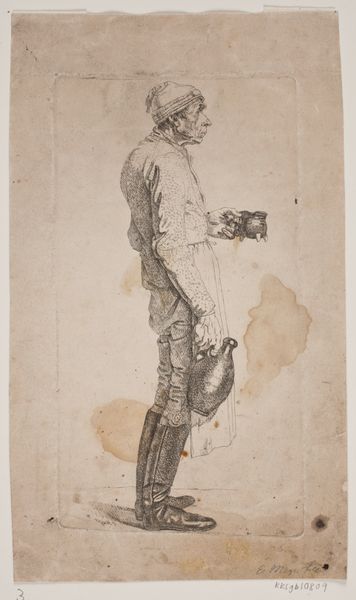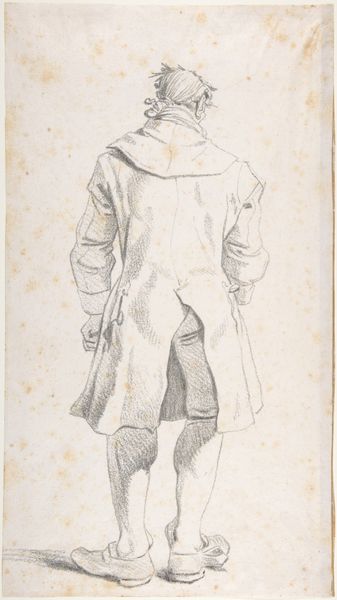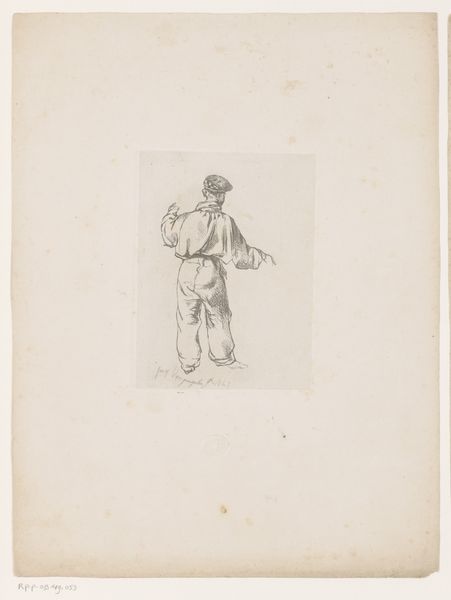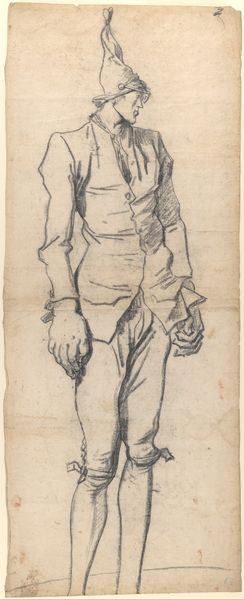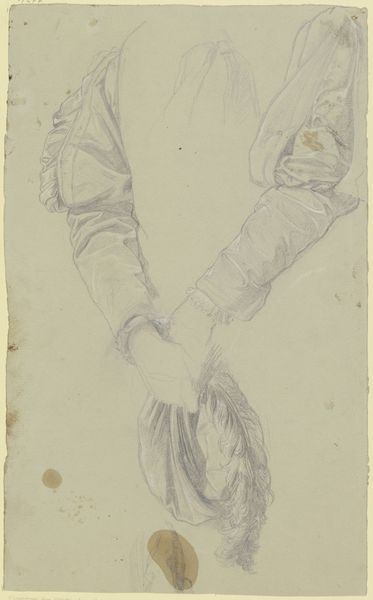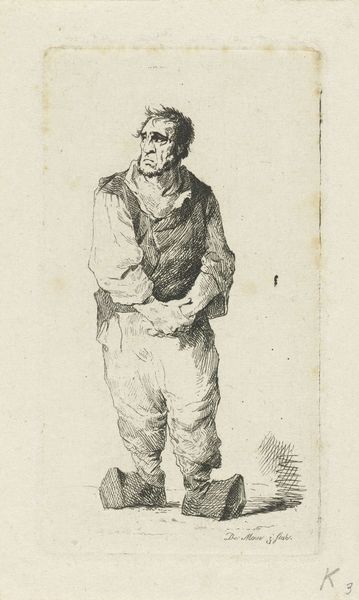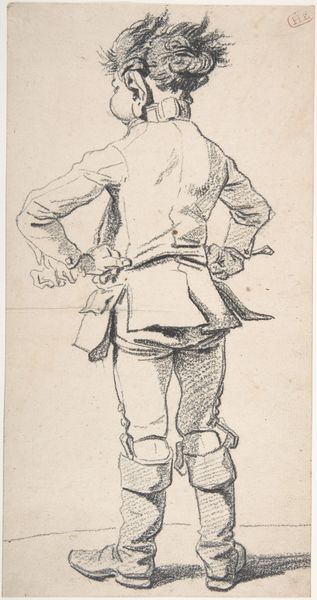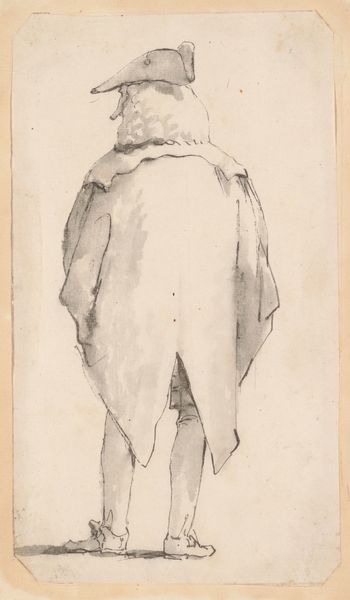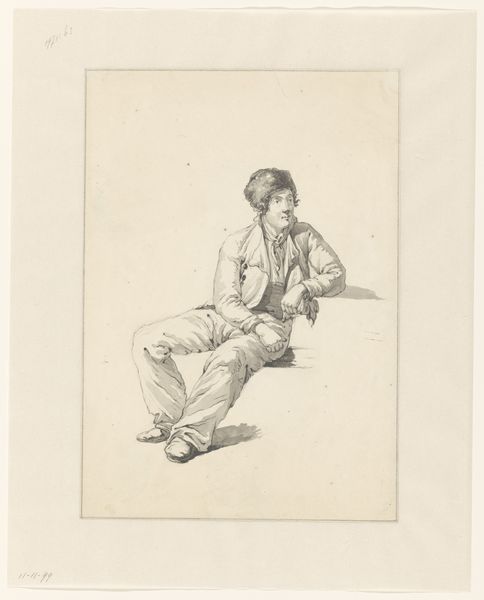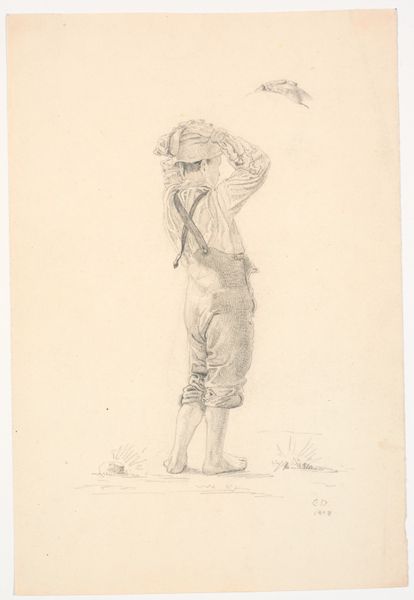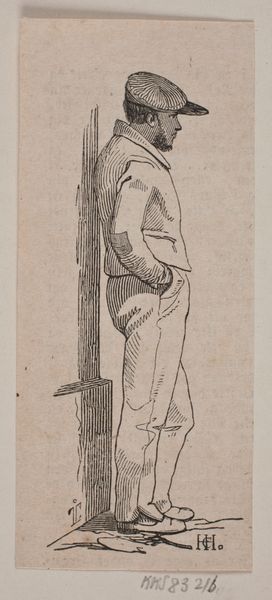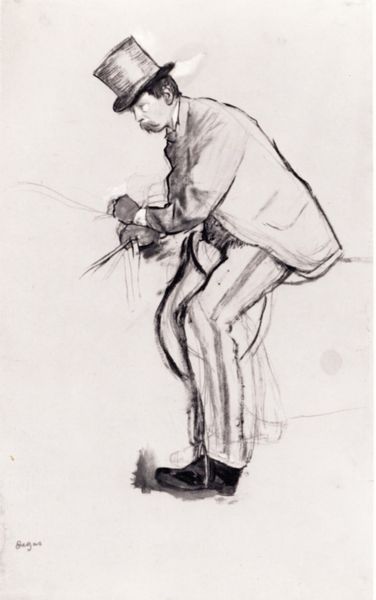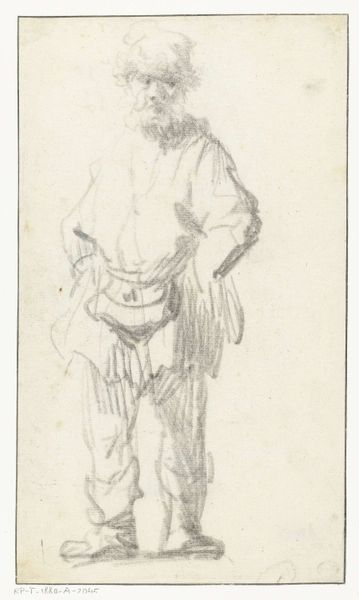
print, engraving
#
portrait
# print
#
romanticism
#
genre-painting
#
engraving
#
realism
Dimensions: 150 mm (height) x 80 mm (width) (plademaal)
Curator: Here we have an engraving by Ernst Meyer, titled “Mikel Glisner,” created in 1821. It’s currently housed here at the SMK, Statens Museum for Kunst. Editor: The figure looks burdened. It’s all grayscale tones, an aged man depicted with a kind of melancholy, especially in the downturned expression. What can you tell us about the context? Curator: The work very much represents a surge in romanticism coupled with a touch of realism present in the day. Meyer’s study of the human condition, even in printed form, made art accessible, showcasing various social strata. He focuses on conveying Glisner's essence. Editor: There's a vulnerability to this representation. Glisner is presented with worn clothing and careworn features, but also a dignity in how he holds what I presume are instruments of his livelihood. How does the artistic style speak to broader narratives of the period? Curator: Meyer presents Glisner as neither hero nor villain, but as an individual. The Romantic ideals were moving beyond idealized nobility into depictions of the individual human experience, reflecting changing societal views. And prints, particularly engravings, played a crucial role in spreading not just art, but also the ideas. Editor: Right, the printmaking technology aided dissemination across geographic boundaries and class lines, meaning there was much wider availability of these ideas than painting alone allowed. I keep coming back to the face though, how the print is focused more on what that means in terms of how images of people from a particular social background, and the narratives being shared across time. Curator: Indeed, it provides commentary through simple representation; Meyer encourages empathy by reminding us of shared humanity. Consider too, the social context and that perhaps, Meyer hoped for Glisner to be seen not as a social problem, but as a man, which in itself, can be powerful social commentary. Editor: Food for thought as we move on. This reminds us how historical context changes our interpretations and why it’s always crucial to challenge the lens. Curator: Agreed. Thinking critically helps us find voices within the artwork, engaging across culture and history.
Comments
No comments
Be the first to comment and join the conversation on the ultimate creative platform.
